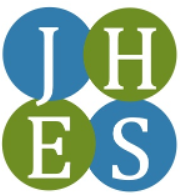Early Assessment of Students in a Basic Statistics Course: Who Is At Risk of Failing?
ABSTRACT
The course on basic statistics is identified as one of the most challenging courses in tertiary educa- tion and has become a bottleneck course in many private and public universities. One mechanism to avoid this and potentially improve the final outcome of a student’s performance is to conduct early assessments. Monitoring the learners’ progress during the first half of the semester is beneficial in planning and conducting interventions for students who are at risk of failing. Current challenges are coupled which the Commission on Higher Education’s implementation of the K-12 Basic Education Program, which downloaded basic statistics course topics to the senior high school curriculum. In this study, students in a basic statistics course offered by the Institute of Statistics (INSTAT) at the University of the Philippines Los Baños during the 1st semester, AY 2013-2014 served as subjects of the research. Data on student’s personal information were obtained from the INSTAT database with anonymity. Using descriptive-associative analyses, this paper aimed to establish the relationship between student characteristics (e.g., degree program enrolled in and scores in laboratory exercises) and the likelihood of passing or failing the course. A discriminant function was also constructed to help identify if a student is at risk of failing the course and predict the risk of failing. Findings revealed that the course taken as pre-requisite, degree program, and college where the student belongs to have varying effects on the probability of failing the course. Moreover, topics on probability, off-office lecture and laboratory class schedule, and shorter stay in the university tend to increase the likeli- hood of failing the course. The discriminant function constructed is a good tool to identify potentially “at-risk-of-failing” students to be able to support and guide them before reaching the point of failure. These results pose challenge to senior high school teachers and university faculty in terms of bridging the gap between the content of secondary basic statistics or other related subjects and the delivery and handling of K-12 graduates enrolled in a tertiary applied and degree-program statistics course.

Early Assessment of Students in a Basic Statistics Course: Who Is At Risk of Failing?
11 downloads0.00 KB
AUTHORS
Marie Joy Lopez, Rocky Marcelino, Maurice Borromeo, Mark Jay Dating, John Lorenzo Yambot
